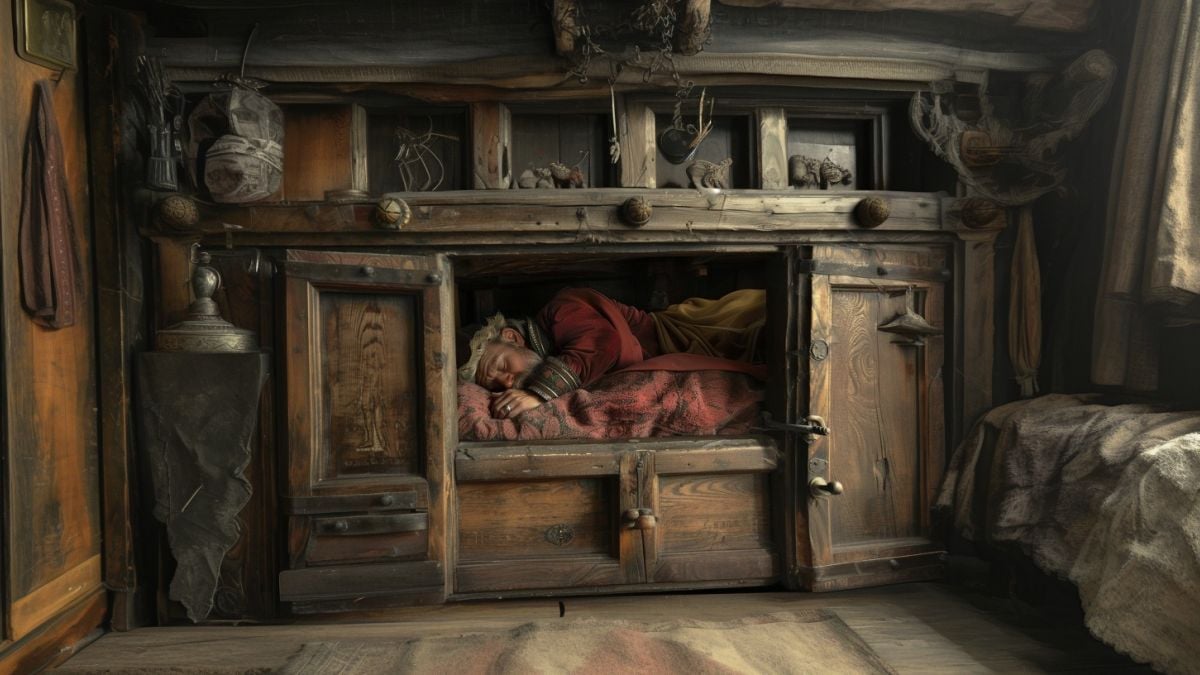GVTech News In the Middle Ages, it was common to sleep in wooden closets. The big question is why we stopped doing this
The idea of sleeping in a wooden closet seems far-fetched to us today. However, for centuries, from the Middle Ages until the early twentieth century, this was a common practice in Europe. These wardrobe beds were popular with all social classes, from peasants to aristocrats.
A very tangible need
First of all, we must go back to the context of that time. Medieval homes were often simple, poorly insulated rooms. Stoves, the only source of heat, were not always able to ward off the harsh winter cold. Sleeping in a wooden closet, which is a small cocoon, provides effective protection from frost and drafts. These compact structures also harnessed the body heat of their occupants, creating a more pleasant microclimate.
Then these beds were multi-functional furniture. When folded during the day, they save valuable space in often cramped homes. When night fell, they turned into a comfortable shelter. Saving space is important for large families sharing one living room. In addition, some wardrobe beds have built-in drawers and compartments, which function as wardrobes and chests of drawers, further optimizing the available space.
Privacy was also an important factor. In these often crowded homes, bunk beds provide a sort of personal space, a place where one can isolate oneself from the sight of others, read or change clothes out of sight. Some models can even be locked, Thus providing additional security for their belongings.
Why did we abandon these closet beds?
The arrival of central heating and more efficient fireplaces made medieval homes significantly warmer. The need to hide in the closet is reduced.
Then the twentieth century witnessed a change in mentality. The idea of sleeping in a confined space began to be viewed as stifling and unhealthy. Wardrobe beds were then associated with a bygone era, and were replaced by more spacious and airy slatted frames. Advances in bedding materials and technologies have also played a role. Thicker, more comfortable mattresses require more sleeping space.
The rise of embedded solutions: Back to basics?
Ironically, in the face of the cramped conditions of modern urban apartments, we are seeing a renewed interest in compact solutions. Capsule hotels, inspired by Japanese tank beds, are a striking example of this. These small units provide a minimalist sleeping space, but convenient, and often affordable. It attracts a young and connected clientele looking for an alternative to traditional hotels.
Other innovative concepts explore optimizing space for sleeping. Multi-functional furniture built-in Murphy beds allow you to turn your office into a bedroom in just seconds. The small apartments, designed to maximize space and comfort, feature modern, designer wardrobe beds.
Changing lifestyles and the urgent need for sustainable solutions encourage us to rethink our sleeping space. Inspired by the craftsmanship of medieval wardrobe bedsToday's concepts explore simplicity and multi-functionality.
Perhaps the future of sleep will be shaped by a new return to basics, where optimization of space and comfort combine to create ingenious solutions adapted to the needs of our time.

“Hardcore beer fanatic. Falls down a lot. Professional coffee fan. Music ninja.”





![[VIDÉO] LPHF: Like Cole Caufield, Ann-Renée Desbiens has her own unique shoes](https://m1.quebecormedia.com/emp/emp/63411_07894593662cf2-8a9e-4bd6-aa34-c999d634a876_ORIGINAL.jpg?impolicy=crop-resize&x=0&y=291&w=3492&h=1966&width=1200)

More Stories
First Date Date: 7 Tips
Martin Freeman stopped being a vegetarian after 38 years
MS-DOS 4.0 source code release: What a story!